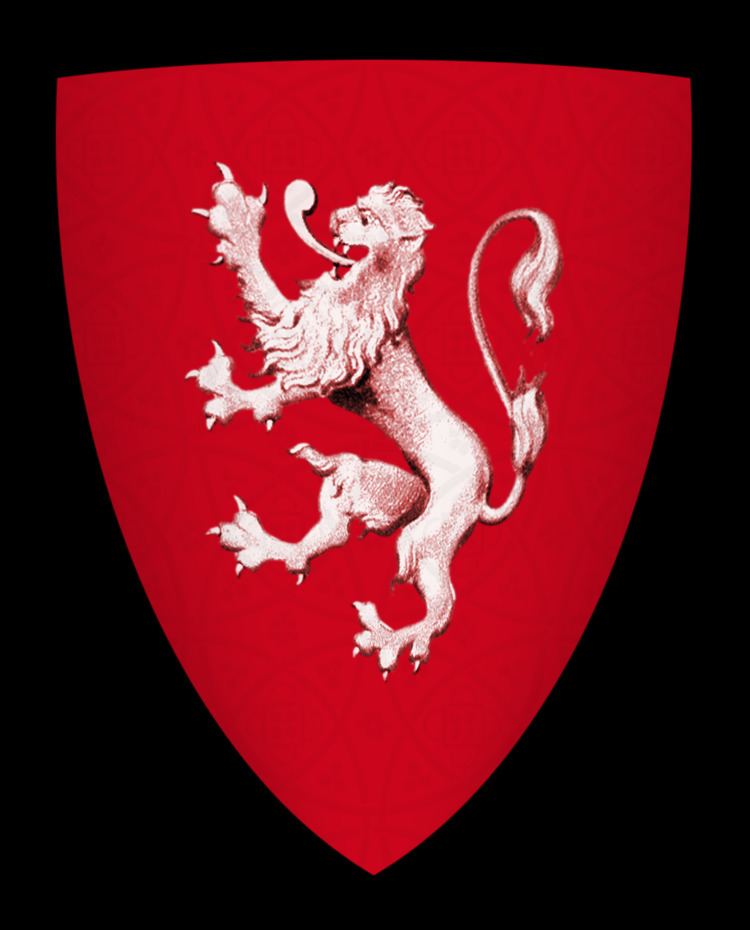Title Lord of Montbray Died 1188 Nationality English Parents Nigel d'Aubigny | Name Roger Mowbray Children Nigel III de Mowbrey Role Lord of Montbray | |
 | ||
Wars and battles Battle of the Standard
Battle of Lincoln (1141)
Second Crusade
Revolt of 1173–74
Battle of Hattin | ||
Roger de Mowbray (c. 1120–1188) was an English noble, described by Horace Round as
Contents
a great lord with a hundred knight's fees, was captured with King Stephen at the Battle of Lincoln (1141), joined the rebellion against Henry II (1173), founded abbeys, and went on crusade.
Family and early life
Roger was the son of Nigel d'Aubigny by his second wife, Gundreda de Gournay.
On his father's death in 1129 he became a ward of the crown. Based at Thirsk with his mother, on reaching his majority in 1138, he took his paternal grandmother's surname of Mowbray and title to the lands awarded to his father by Henry I both in Normandy including Montbray, as well as the substantial holdings in Yorkshire and around Melton.
Career under Stephen
Soon after, in 1138, he participated in the Battle of the Standard against the Scots and, according to Aelred of Rievaulx, acquitted himself honourably.
Thereafter, Roger's military fortunes were mixed. Whilst acknowledged as a competent and prodigious fighter, he generally found himself on the losing side in his subsequent engagements. During the anarchic reign of King Stephen he was captured with Stephen at the battle of Lincoln in 1141.
Soon after his release, Roger married Alice de Gant (d. c. 1181), daughter of Walter de Gant and widow of Ilbert de Lacy, and by whom he had two sons, Nigel and Robert. Roger also had at least one daughter, donating his lands at Granville to the Abbeye des Dames in Caen when she became a nun there.
In 1147, he was one of the few English nobles to join Louis VII of France on the Second Crusade. He gained further acclaim, according to John of Hexham, defeating a Muslim leader in single combat.
Career under Henry II
Roger supported the Revolt of 1173–74 against Henry II and fought with his sons, Nigel and Robert, but they were defeated at Kinardferry, Kirkby Malzeard and Thirsk.
Roger left for the Holy Land again in 1186, but encountered further misfortune being captured at the Battle of Hattin in 1187. His ransom was met by the Templars, but he died soon after and, according to some accounts, was buried at Tyre in Palestine. There is, however, some controversy surrounding his death and burial and final resting-place.
Legacy
Mowbray was a significant benefactor and supporter of several religious institutions in Yorkshire including Fountains Abbey. With his mother he sheltered the monks of Calder, fleeing before the Scots in 1138, and supported their establishment at Byland Abbey in 1143. Later, in 1147, he facilitated their relocation to Coxwold.
Roger made a generous donation of two carucates of land (c.240 acres), a house and two mills to the Order of Saint Lazarus, headquartered at Burton St Lazarus Hospital in Leicestershire, after his return from the crusades in 1150. His cousin William d'Aubigny, 1st Earl of Arundel and his wife Adeliza, the widow of King Henry I, had been amongst the earliest patrons of the order and, when combined with Roger's experiences in the Holy Land, may have encouraged his charity. His family continued to support the Order for many generations and the Mowbrays lion rampant coat of arms was adopted by the Hospital of Burton St Lazars alongside their more usual green cross.
He also supported the Knights Templar and gave them land in Warwickshire where they founded Temple Balsall.
In total, Roger is credited with assisting the establishment of thirty-five churches.
